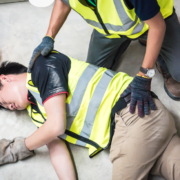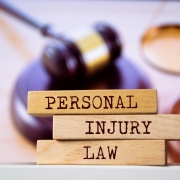The Responsibilities of Building Owners and Staff When Elevators Malfunction and the Fire Department Should Be Called
By Esther Claudette Gittens
Elevators are an essential part of modern buildings, providing accessibility and convenience to tenants, employees, and visitors. However, when an elevator malfunctions—especially when it becomes stuck or experiences a potential free-fall—the responsibilities of building owners and staff become critical to ensuring safety and mitigating liability. Understanding these obligations, as well as when to call the fire department, is crucial to preventing injuries and ensuring compliance with legal and regulatory requirements.
Legal and Regulatory Responsibilities of Building Owners
Building owners are legally responsible for maintaining safe premises, including elevators, under local and national building codes, safety regulations, and contractual obligations. In the United States, the Occupational Safety and Health Administration (OSHA) and the American Society of Mechanical Engineers (ASME) A17.1 Safety Code for Elevators and Escalators provide guidelines on elevator maintenance, inspection, and emergency response procedures.
Building owners must:
- Regularly inspect and maintain elevators to ensure they are functioning properly.
- Hire licensed elevator maintenance professionals to conduct routine checks and promptly address any mechanical issues.
- Install emergency communication systems inside elevators, such as phones or alarms, that directly connect to building security or emergency services.
- Ensure staff is trained in handling elevator emergencies, including when to call for professional help or emergency services.
Failure to uphold these responsibilities could lead to liability for negligence if an elevator malfunction results in injuries or fatalities.
Responsibilities of Building Staff When an Elevator Becomes Stuck
When an elevator becomes stuck, it is essential for building staff to respond promptly and follow established protocols to ensure the safety of trapped occupants. The primary responsibilities of building staff include:
- Assessing the Situation – Staff should determine whether the elevator is stuck due to a power outage, mechanical failure, or another cause.
- Communicating with Trapped Passengers – If there are occupants inside, staff should use the emergency intercom or attempt verbal communication through the elevator doors to reassure them and provide instructions.
- Notifying the Elevator Maintenance Company – Staff should immediately contact the building’s elevator service provider to diagnose and resolve the issue.
- Preventing Unauthorized Access – To prevent further accidents, staff should block access to the affected elevator until repairs are completed.
When Should the Fire Department Be Called?
The fire department should be contacted in specific emergency situations when trapped occupants are in imminent danger or when professional rescue is required. These include:
- If an Elevator Free-Falls or Shows Signs of Uncontrolled Movement – If an elevator experiences sudden drops or irregular movements, it may indicate a severe mechanical failure, and emergency services should be called immediately.
- If Passengers Are Trapped for an Extended Period – If the elevator service company cannot respond quickly or if passengers show signs of distress (e.g., medical issues, extreme heat, or panic attacks), the fire department should intervene.
- If There is a Fire, Smoke, or Structural Damage – If smoke is visible inside or near the elevator shaft, or if the building experiences structural damage (e.g., an earthquake or explosion), emergency responders should be contacted.
- If There is a Risk of Suffocation or Medical Emergency – If a trapped passenger has a medical condition that worsens due to lack of air, extreme temperatures, or anxiety, emergency services should be involved.
Ensuring Elevator Safety
Building owners and staff play a critical role in ensuring elevator safety. Their responsibilities include preventive maintenance, swift response during malfunctions, and timely communication with emergency services when necessary. By adhering to legal obligations and implementing best practices, they can prevent serious accidents and protect occupants from harm. Calling the fire department should always be a priority when there is an immediate threat to life or safety, ensuring that professionals handle the situation effectively.












Leave a Reply
Want to join the discussion?Feel free to contribute!